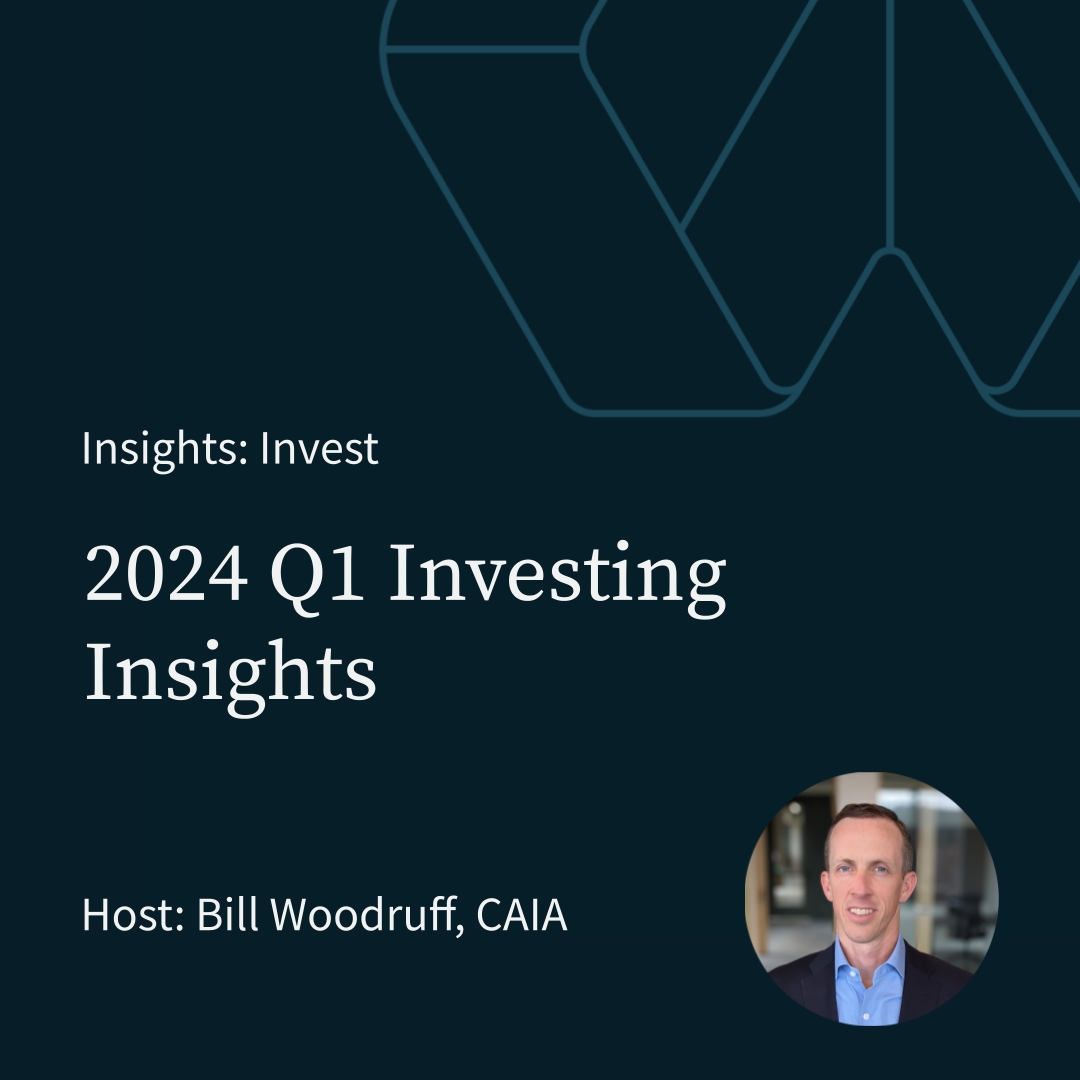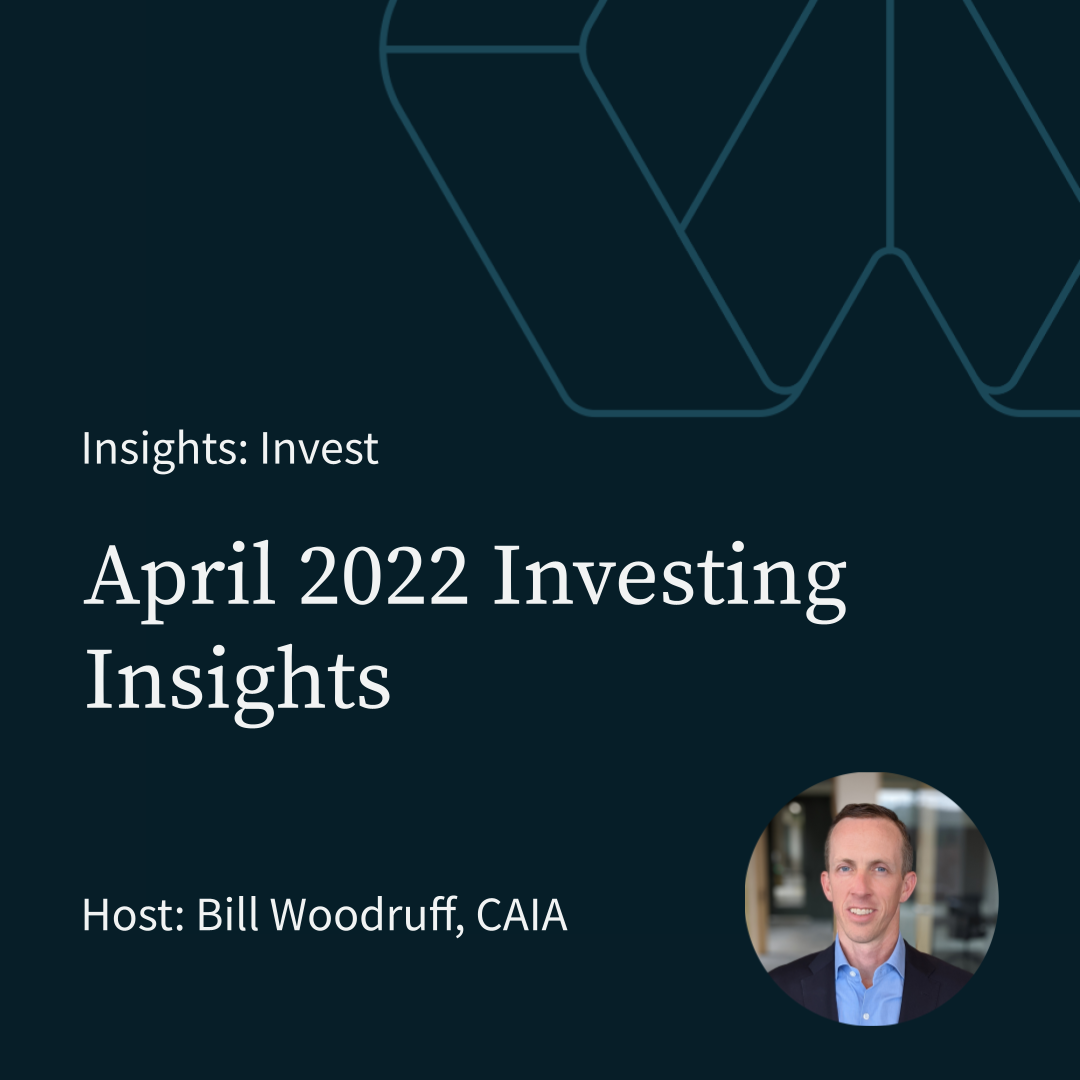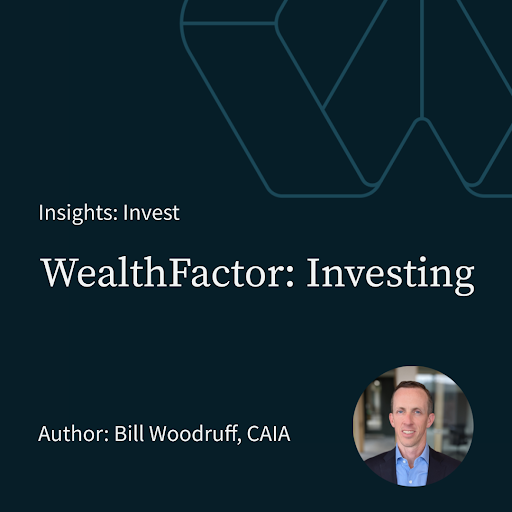SUMMARY KEYWORDS
September 2020 Review Replay
graph, equities, currency, growth, markets, investing, investors, relative, largely, decline, valuations, dollar, factor, portfolio, investment advice, outperformed, service, equity market, period, global economies
Transcript:
Good afternoon and welcome. My name is Bill Woodruff.
Today, I'll be hosting the wealth factor review of global financial markets and investing through the end of September of 2020. Before I get too far in, let me please share a few words for compliance purposes. This call is for informational purposes only and may be recorded. statements made during this call are subject to the opinion
of the speaker and the risks and uncertainties of which are significant in scope and may be in their very nature beyond the control of wealth factor, there can be no assurance that such statements will prove to be accurate and actual results and future events could differ in a material way from said statement. Historical results are not necessarily indicative of future performance. For those of you who don't know me as well or at all, I am the founder and operate as the Chief Investment Officer of wealth factor. I've been involved in investing for over 20 years now and have a diverse professional experience set spanning early stage investment advice and investment management businesses and also as a managing director at a publicly traded asset manager well factor is a Lake Oswego based investment advisor wealth factor provides customized investment plan and financial planning oriented investment advice. All of the portfolios managed by well factor are custom and typically based on indices comprised of stocks and or bonds accounts of well factor clients are held in their name at independent third party custodians well factors fee model is unique, and a big part of what makes well factor different. We charge a point three 5% asset based fee, which is is likely less than a third of what you'll see from a similar service set. Well factor is in its services sent around a investment philosophy called risk smart risk. Smart has three different component parts.
2:22
The first is about being what we call portfolio smart. And this is more an oftentimes about what's avoided in how you receive investment services or investment advice or investment management and less about what you are trying to get
2:38
or find. And this oftentimes can be as many things are in investing counterintuitive, it's my belief to be portfolio smart. investors should be avoiding things like picking individual stocks or trying to time the market they should be avoiding layers of management and unnecessary complexity. And I would say most of the time, if not all the time complexity is
something that should be
3:06
an easily can be avoided. The second component part is being fee smart. And we in offering our service and focusing on systems automations and efficiency eat our own cooking on this one by charging our clients only point three 5%. But we take it a step further. And this is interconnected to being portfolio smart. We're working tirelessly to identify efficiencies and remove layers and layers always include increases in total costs. And the last component part is being tax smart. In my time in the industry and bet with other investment professionals tax is almost always an afterthought. It's my belief though that tax is likely the single greatest area through intelligent design, and perhaps even to some degree active management
3:55
that an investment manager or an investment advisor can add value on a specific or individual customer or client basis risk. Smart Investing is in its essence, based on the belief that high fees force risk in portfolios. This serves no purpose for anyone other than the margins of the investment manager or the investment advisor on our overview today, I'm going to cover a handful of items here, including valuations. Looking at that, and then also spending a little bit of time on the relative risks across asset class and risk tight that I think about managing portfolios risk efficiency relative to each specific investors circumstance and ability and willingness to tolerate risk. It really should be the focus of any investment advice service provider, not an attempt to predict something that cannot be predicted taking a quick look at valuations and growth. usual, I'm not going to spend really any time talking about what did well, and didn't do well, yesterday, I just don't think or believe that's useful in how one should position their portfolio going forward. I'm going to jump right in to some of these topics and some of the prepared content here. This graph is the s&p 500. It comprised in a particular way to highlight inflection points, specifically from a valuation perspective, and it's using forward p e for the s&p 500. And in each low and high point, it's isolating What are effectively extremes for valuation. And so we can see today for probably lots of very logical reasons at a forward P of 21 and a half on the s&p 500 that set a relative High Point versus historical. And if you were able to catch my prior month's review, I spent a little bit of time on this concept but really more from a non us perspective. And, and in that graph, you've shared some thoughts relative to Japan as a a comparative, both from an interest rate perspective, as well as evaluations perspective on the point that came out of that analysis was, while you know, we might be at the upper band of our experience sets in US equity valuations were nowhere near the levels that Japan has seen in its history.
6:26
So back to focusing on the US,
6:30
which I think is a US based investor is logical. This takes the s&p 500 index for P e ratio and looks at it relative to his 25 year average, to give us a more specific sense of how far above average historical experience are we and you know, what just over one standard deviation is material, but in my experiences operating in global financial markets, oftentimes they operate well outside of normal distributions. No doubt valuations are high relative to historical averages, the question the unanswerable question is, does that matter? Or does that mean anything? And should we take action? And that could be perhaps a full conversation and dialogue?
7:12
But my general thinking
7:15
is probably not, you know, should it influence perhaps our asset allocation in certain circumstances as investors approach to retirement and become in retirement,
7:28
potentially, but,
7:30
you know, I think for that needs to be looked at at
7:32
an individual
7:34
circumstance basis and through thoughtful analysis, pairing the right mix of assets and the right investment approach or structure investment plan, per each circumstance. The next page here looks at what this is trying to get at is there a predictive relationship between valuation and future return,
7:56
the graph on the left is looking at very large data set or number of forward PE ease and looking out over the next one year and saying what was the return over those next 12 months, and then the the next one, the right side is doing that same thing. But looking out over the following five years, and the downward slope to the regression line suggests that there is some relationship between valuations being high and returns being lower. However, we can see especially over a one year period of time that that predictive relationship is weak at best. And there are significant numbers, occurrences where even though valuations might be high, or above a certain level, the following one year and in many cases, five year
8:47
performance
8:49
for equity markets is positive, in some cases, very meaningfully, positive valuations matter. But in terms of their predictive value, especially in one year, or the short run, there's a very limited predictive value, they're
9:02
throwing this one in here. It's a little bit
9:05
outside of how I think about, or I guess, I don't know that there's a whole lot of importance in this information. But it's clearly very timely. As the November election presidential elections and my guess, are coming up soon.
9:24
So in this analysis, it's going back
9:26
a long long way. It what it does is breaks down the performance of the s&p 500 by calendar year, and then the color as well as the real GDP. And then the color of each bar on the chart is representing the government control with gray being divided divided government and blue being democratic control government and red being Republican controlled government and it's you know, are their conclusions here. You can loosely see that the average returns for Republican controlled government are higher for the s&p 500. And, you know, as you think about how what drives equity prices, it's really the future of big people, all participants in the market place in aggregate, attempting to predict, or sass what future earnings, dividends etc might be worth. And so if you look at republican policy, you would say, Okay, well, Republican policy is going to be generally more supportive of bigger business, or perhaps even business in general. And so there's going to be naturally more optimism. Well, the there's a counterpoint in the data here is we look at the real GDP change or Republican. So why, while the SNP might really like republican governance, real GDP, as unnecessarily
10:57
had that same
11:00
effect from
11:03
that republican governance relative to the divided government, as well as the democratic one, and you know, the practical reality here, while this exercise might be timely, I don't know that there's a whole lot of meaning in this analysis, in that there's a lot of different underlying randomness is that drive all of these elements, GDP, long term demographic headwinds, and tailwind all sorts of elements in my advice, in on the topic of positioning portfolios, before and after elections is to completely ignore it, there will be likely some increased volatility leading up to it, and maybe some significant volatility shortly after the outcome of the election is known. But beyond that, there are much larger factors that will drive the performance for equity markets over time shifting gears to fixed income dynamics, fixed income is likely an area that poses the largest challenge to all types of investors. I think, if you're out beyond 10 or 15 years before, you're going to use the the invested funds, the case for fixed income, in my opinion, is very weak. As you approach retirement, or are in retirement, the case is still weak, low yields, have limited potential benefit to an investor looking to generate income from their portfolio. Does that mean that fixed income shouldn't be used at all? I don't believe that I don't, I think that there, there might, in my experience, the financial markets, including interest rates and credit markets, will live outside of normal distributions for far longer than we think that they should. And that and that could put in an example of that might be perpetual deflation, not maybe not unlike what we saw in Japan for a very long period of time. And in those sorts of scenarios, owning fixed income today, it
13:13
may end up being
13:14
a very good thing, there's a couple different points, I'd draw from what is a lot of data on this particular page. But on the left side, just to clear it, the information, the top part of the left side shows yields as of the end of September of for US Treasuries. So let's all assume for the sake of relative comparatives that there's no credit risk in US Treasuries. And so we can see yields at incredibly low levels 13 basis points on the two year or very close to zero there and only point six 9% for 10 to 10 year Treasury, so you're not getting a significant amount of additional compensation, at least in dollar yield terms, perhaps on a percent different spaces you are as you go out and take what is really a significant amount of interest rate risk down the 10 plus years of maturity on the curve, we can see that there's been some change but very little change over the entire quarter from a yield perspective as we look at it relative to September 30. I'm sorry, June 30, in terms of return, so we see big numbers here, really across the board. And that's reflective of the dynamics of fixed income. If markets yields decline, fixed income or bond prices appreciate and so as these yields have dropped dramatically this year, because we've seen that corresponding benefit from a bond portfolio through appreciation. I, in my experience working with both investment professionals and investors directly have seen oftentimes, investors look at Prior performance for fixed income funds or fixed income in general, there, this is such an extreme case as to why that makes little to no sense. So as yield approach zero, it's theoretically they absolutely can go negative
15:16
but there becomes a
15:18
significant asymmetric potential for appreciation in fixed income portfolios versus depreciation because of how low yields are. And so interest rate risk is a critically important risk to understand and get right in all portfolios. Today, the bottom left section is looking at what the investment management world would call mostly spread. And I spend the I focus on this in its simplest forms in terms of the corporate credit market. And then I break that out between investment grade corporates, which is the first line under that sector, and then high yield, which would represent non investment grade fixed income. And so as I think about this, it's why am I getting so the first step is, am I getting compensated? Or are the risks work fit for US Treasury? fixed income? And so if the answer to that is yes, then to me that is where investors who are looking to counteract risk outside in other areas of the portfolio equity per se should be focused? If the answer to that is no or not really, then it's the next question is is to say okay, am I is the compensation for taking additional credit risk worth it. And so as we look at investment grade corporates, the yield on those has widened dramatically in the in the initial outcomes are how the Coronavirus period of time played out and have narrowed dramatically since then, and continue to narrow through the third quarter of the year. And now in a portfolio of investment grade corporates and, you know, varies based on maturity. But in this very diverse index be used here. It's, there's a 2% yield there. So you're in during the interest rate risk that you would normally endure with treasuries, plusher and during a credit risk in a basket of US companies as borrowers. And you know, very quickly, it's getting harder and harder to say, Okay, I'm getting compensated for those risks. You know, as we go down to high yield, high yield spreads ballooned out far wider, and they've come back in really, really quickly, just like equity markets have recovered. And so we saw over the course of the quarter, yields decreased from 6.7, down to 5.77. And as I look at that, and say, Man, the lower that number get, the less time being compensated for what is a very material amount of risk, and so is should investors invest in high yield? My general recommendation is right now, only if the need for income is so high. And as always, or at least the vast majority of the time, I think about investing in high yield or anything that's non investment grade, out of the equity risk bucket of an overall portfolio. So really, my recommendation for most clients who aren't very much handed underwriting income out of their portfolio is they look to equity markets, because of the equity markets have a less so high yield, or bonds in general lack the appreciation potential on the inflation protection potential of equity markets. So if I'm going to take equity market risk, I'd rather take equity market risk, the yield isn't a priority over high yield when high yield yields and spreads are low on a relative basis. On the right side, it's a they put some of these spread concepts into historical perspective. And so there's a range for, and I look at this as maybe a little bit unnecessary in the amount of detail. So the dotted line in the middle of the graph on the right is separating investment grade and high yield. And on both sides, it's breaking that down even further into the highest rated investment grade down to the lowest rated and the same thing on high yield. And so we're seeing a bit more granular detail,
19:40
but the conclusions are really the same across both sides. The purple ish bar or line in that range is where it is currently. And so we can see that those relative to historic ranges, where spreads are at a lower, low level and then we have the blue diamond is an interesting Relative data point because it was the year today peak, how bad did it get it the tail end of March, when risk was selling off across the board, and we can see that it was bad, but we've seen a lot worse, which I think is fairly interesting. I think just like, as you think about equity valuations, the low yields have distortive effects on asset prices. And I think that probably translates to corporate credit spreads as well. The a full hundred and 65 additional basis points of yield in a triple B rated corporate bond on an incremental additional dollars of yield basis is really material. If you rewind to when yield smarter yields across the board were dramatically higher 400 basis points might have only been double of what you were getting before, not three or four times like it is today with our record low levels of yield. I'll conclude today with just a quick reminder about the importance of having an investment plan and implementing it with in with a disciplined in a disciplined way. This is a bar chart with data based on a study conducted annually by a company called Dalber. And what it's doing is looking at the performance over 20 years and analyzing it. And then for a variety of asset class key part here is the orange bar. What is the average investors experience? And the biggest takeaway here is that average experience for the average investor dramatically underperforms the majority of asset classes. And it's my belief that large that can largely be attributed to emotion, a lack of having an investment plan, but also the natural human tendencies we all have from an investor emotion and bias perspective, there is constantly reason not to be invested in equities. And to be successful in equity investment, I believe you have to are really investing in general is ignore those human emotions and bias, as well as that short term noise that is persistent and perhaps getting magnified thanks to access to information via social media
22:35
and having a plan
22:38
and likely having a discipline steward to assist in executing executing on that plan is of critical importance. I hope you found these comments useful










